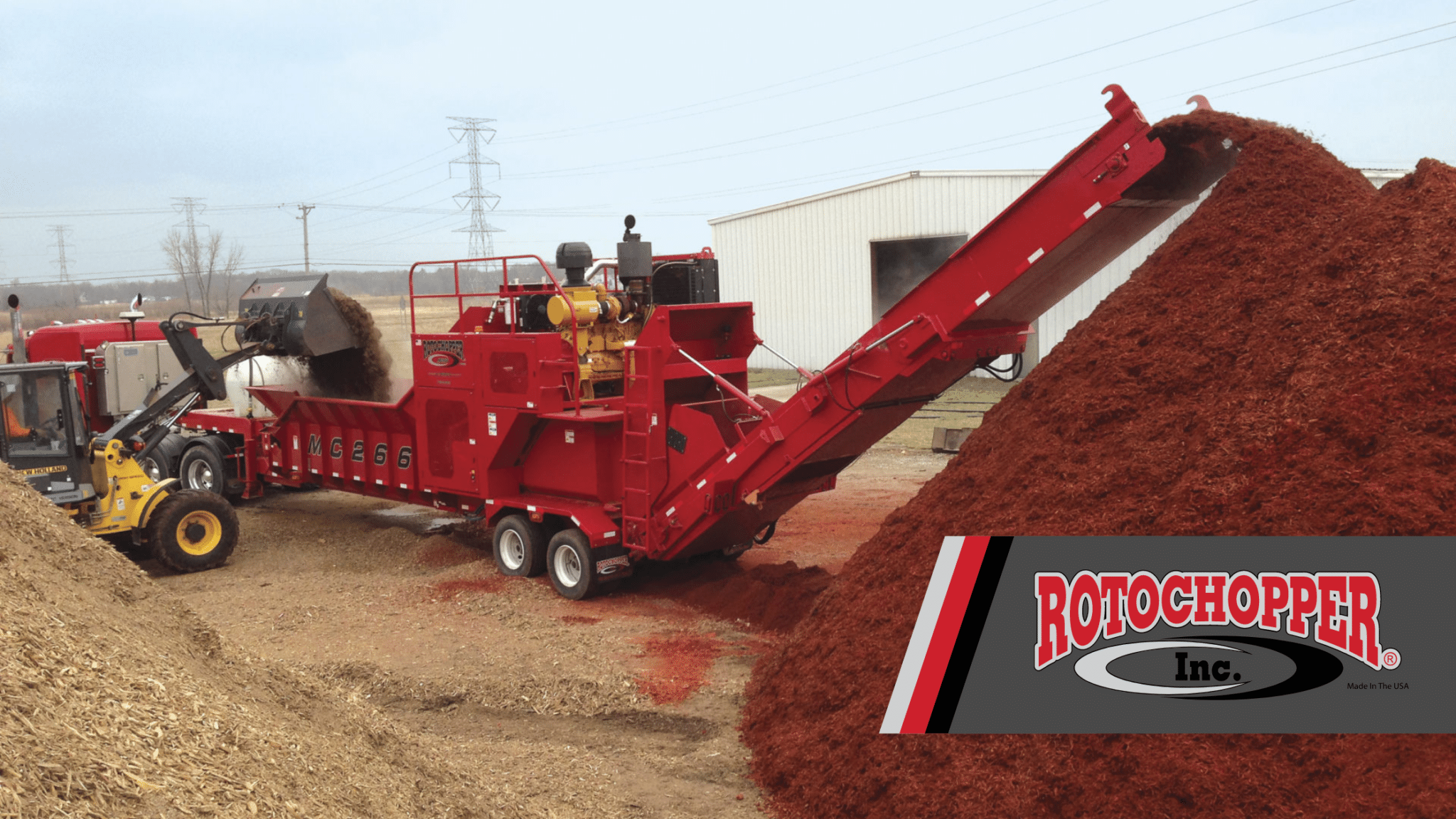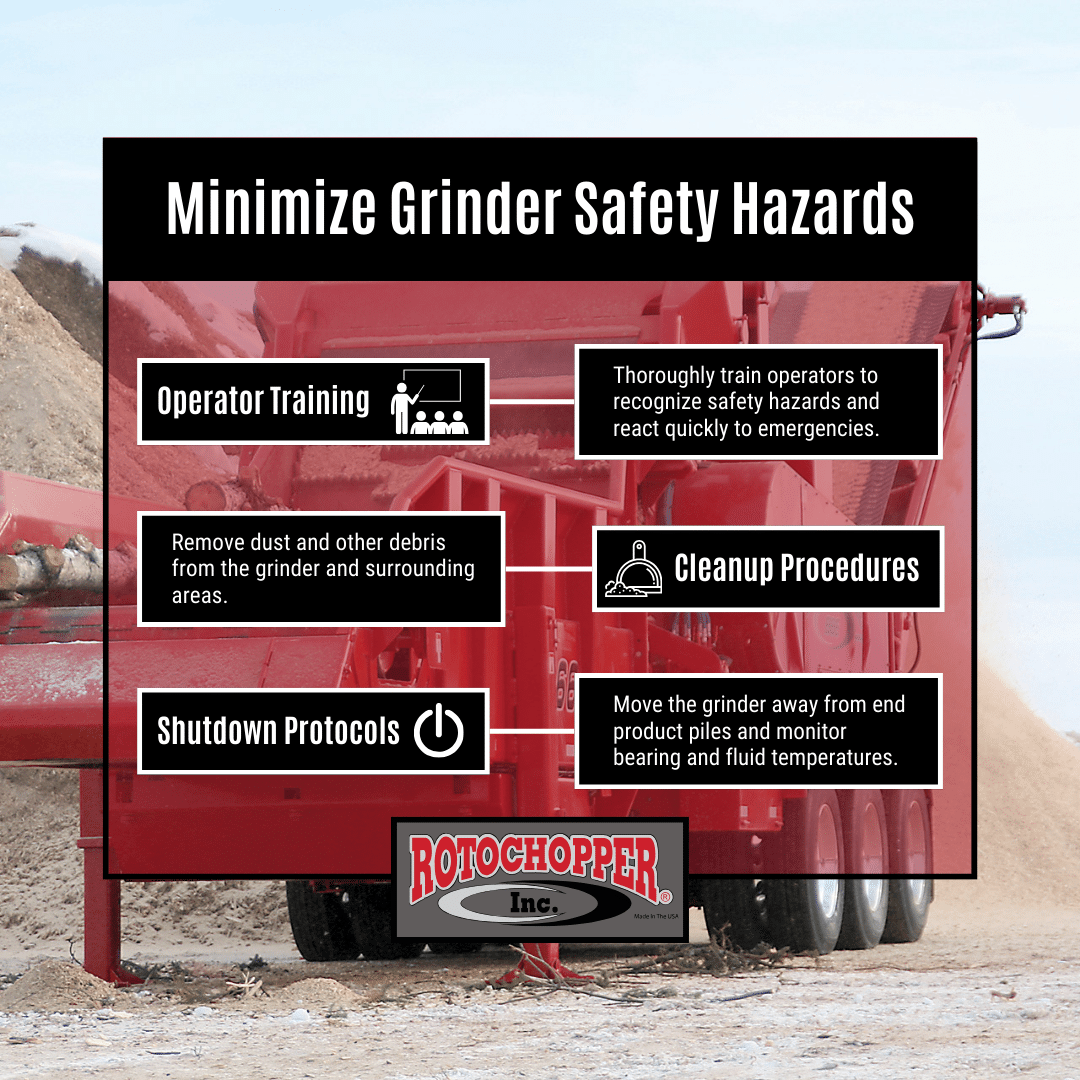
Industrial horizontal grinders, while critical to the smooth operation of many waste reduction worksites, can pose a possible hazard to on-site operators and bystanders if proper safety protocols are not followed. The most effective way to minimize risk of injuries is to keep operators informed on the latest safety protocols and procedures, but worksites can also minimize threats by heeding proven grinder precautions, such as following proper training, adhering to shutdown and cleanup procedures, and wearing necessary personal protective equipment (PPE).
The Importance of Grinder Safety Training
Keeping grinder operators up-to-date on training equips them with the tools they need to minimize existing grinder hazards and quickly respond to emergencies. Through professional training programs, like Rotochopper University, operators learn to recognize and mitigate risks, enhancing their ability to operate grinders safely and effectively.
Key Elements of Effective Grinder Operation Training
Each training program emphasizes different aspects of grinder safety, but common training topics include identifying potential hazards, properly handling equipment, utilizing grinder safety features, and using appropriate PPE when around or operating a horizontal grinder. Most programs also train operators in emergency procedures and basic grinder troubleshooting to prevent unnecessary damage and downtime in case of a breakdown.
During training, operators should pay close attention to segments detailing regular equipment maintenance and inspection so they have the knowledge needed to keep their grinder operating at peak efficiency.
The Significance of Personal Protective Equipment
PPE helps keep operators safe by providing protection from flying debris, hearing loss, and more. Essential grinder PPE includes safety glasses, gloves, hard hats, hi-vis vests, hard-toe shoes, and hearing protection. In addition to standard PPE, grinder operators should dress for safety by tying back long hair, avoiding loose clothing, and removing dangling jewelry before work.
How Preventative Maintenance Keeps Operators Safe
Enrolling in a comprehensive preventative maintenance plan can help keep your horizontal grinder efficient, stable, and safe during operation. During regular maintenance inspections, our technicians discuss the grinder’s recent performance with the operators and thoroughly examine each part of the grinder for problems that, if left unchecked, could turn into more serious issues.
Grinder technicians will also monitor the health of essential grinder wear parts, like sizing screens, mounts, and teeth. With RotoLink®, Rotochopper’s remote grinder monitoring system, operators can track wear part lifespan on their own, ensuring wear parts are replaced in a timely manner.
Regular maintenance isn’t just a matter of preventing unnecessary downtime and lost profits—it’s also a critical part of protecting your employees. Poorly maintained grinders are not as predicable as well-maintained grinders and could have increased issues over time.
Minimize Safety Hazards
Proper grinder shutdown and cleanup procedures keep everyone on the job safe by reducing fire and electrical grinder hazards. These topics are typically covered in operator training, but employees should be regularly refreshed to ensure the procedures and their importance stay top-of-mind.
Implement Ferrous Metal Removal Systems
Depending on your primary feedstock, your operation may benefit from a ferrous metal removal system. Not only does this help prevent sparking if the metal enters the grinding chamber—it also helps keep metal from contaminating your end product, where, if it gets too hot, it could cause a fire.
Follow Cleanup Procedures
During daily cleanup, operators should use an air hose or pressure washer to remove dust, sawdust, and other debris from the horizontal grinder, as well as the surrounding area and inside guards and doors. Spilled fluids, including hydraulic fluid, grease, fuel, and oil should be cleaned thoroughly. Operators should pay especially close attention to the areas around the engine and hydraulics.
Execute Proper Shutdown Protocols
At least one operator should monitor the grinder for 30 minutes after shutdown. Check the temperatures of the rotor bearings and hydraulic fluid, and, if possible, move the grinder away from your end product.
Keep Your Operators Safe with Rotochopper Training and Equipment
Rotochopper grinders come equipped with the latest safety features designed to minimize downtime and mitigate on-site risks. In addition to cutting-edge equipment, Rotochopper also offers comprehensive educational programs through Rotochopper University to equip grinder operators with the knowledge they need to keep themselves and others safe.
Contact us today to learn more about how to keep your operators safe and effective on the job!

